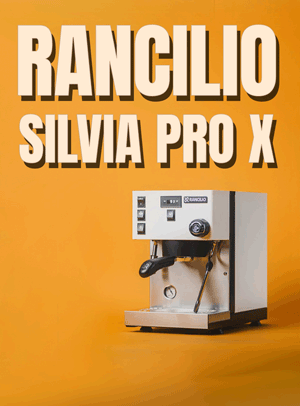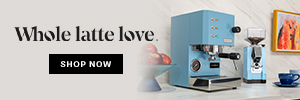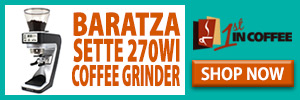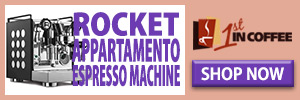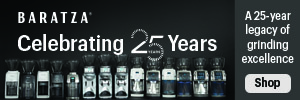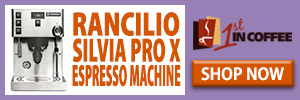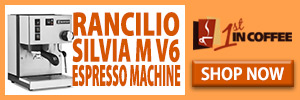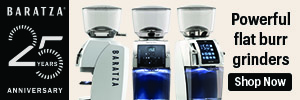I’ve always loved the aroma of fresh roasted coffee. I’ve been drinking café au lait since I was a child, but I first discovered the real taste of coffee 12 years ago. You see, in Argentina we are used to drinking sweet Brazilian coffees that are often roasted with sugar. However, the mother of my former girlfriend was Colombian, and their family in Bucaramanga used to send them high quality coffee. The taste of this new coffee, with its brightness/acidity, was really different from the beverage I used to call coffee.
For the first time, I realized that coffee could be taken “black” – without sugar or milk – as they told me real coffee should be, without expecting an ulcer… but unfortunately, I could not keep this habit with my usual coffee blend.
Becoming a Barista
Toward the end of 2005, when ASACAFE (the Specialty Coffee Association of Argentina) was a newly formed organization, I attended a seminar titled “Specialty Coffee Comparative Cupping and Coffee Chemistry”, presented by two instructors, an American and a Colombian. Instantly, I fell in love with – and became addicted to – coffee. By 2006, I had become a barista, one of the very first to be certified as a professional.
In Argentina, coffee consumption is currently around 4 kg (8.8 lb) per person (about 150,000,000 kg) per year. We drink tea as well, but the beverage most consumed is “mate”, a native beverage. We have an espresso based culture, due to the great Italian immigration of the late 19th century, and drip coffee is not typically served here.
Unfortunately, however, the barista profession is underdeveloped, and most of my limited knowledge comes from websites and blogs. The average coffee in Argentina is made without tamping, using less than 6 g of coffee per 100 ml cup. A ristretto in Argentina – which is not to be found everywhere – is really an espresso.
The vast majority – 95 percent – of the coffee that is consumed in Argentina comes from Brazil. Unfortunately, we typically do not receive their best quality beans, as the majority of the consumers here don’t even know or care what they are drinking; in fact, only a few Argentines have ever tasted specialty coffee. What is even worse is that what most people consume is the sweet coffee I mentioned earlier – “café torrado,” coffee roasted with sugar, as much as 15 to 20 percent of the weight of the batch. Café torrado produces an extremely sweet beverage, especially when made with Brazilian green beans, but you get used to it. Worst of all, café torrado is the best option for passable coffee, as the other method used to cover the poor quality of the beans available in our market is a very high level of roast that makes the coffee extremely bitter and virtually undrinkable.
From Second Place to the WBC
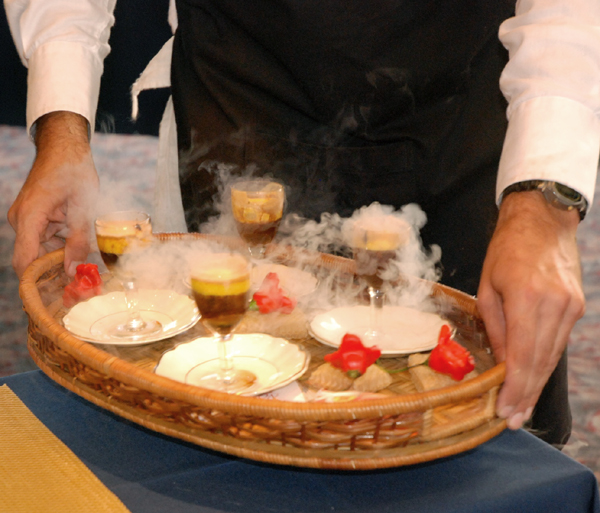
This year, ASACAFE organized the first Argentinean National Barista Championship, with eleven baristas competing. There were more registered, but several baristas were possibly intimidated by the signature drink part of the competition and did not show up. A friend of mine, Facundo Suarez, was competing also, but the hotel where he worked as a barista would not allow him to take the afternoon off to practice for the competition. This gave him less than ten minutes to go before he was to go onstage – not an ideal situation. I loaned him my grinder and coffee blend for the competition and showing how good he is as a barista, in the end, Facundo won, and was named the Argentine champion. I finished second in that competition, but in early July, Facundo informed ASACAFE he wouldn’t be able to make it to the WBC in Tokyo, for personal reasons.
And so, with only two weeks’ notice, I began to plan my trip to Tokyo.
As it was Argentina’s first time at the WBC, there were no sponsors for the trip other than ASACAFE. There is a Camara Argentina de Cafe (Argentinean Coffee Chamber of Commerce), which represents the interests of the biggest coffee roasters in Argentine, but they didn’t offer any help at all. I don’t know if that was because they aren’t interested in educating Argentinean consumers about quality coffee (for fear of creating a demand for better coffee at the same price – around $10 US per kg) or if it was because they felt my trip should be ASACAFE’s sole responsibility. No matter… they missed a very good opportunity to show their customers they care about quality coffee.
It wasn’t easy to find cups that fulfill the WBC’s requirements here, as most of them are square and larger in size than allowed. Fortunately, Porcelana Tsuji’s CEO very kindly offered one set of their new line of espresso and cappuccino-sized tea cups directly from their production line, just in time. I picked them up from their factory, just five hours before heading to the airport.
I didn’t have time to design a new signature drink, so I had no choice but to compete with the same one I used in the National Championship, with some small changes. I did get some help here: a donation of two ISI whippers from their Argentinean representative, six wine glasses and a decanter from R Cristal (to represent Argentinean wines), and a delicious sauce provided by Pampa Gourmet.
Arrival in Tokyo
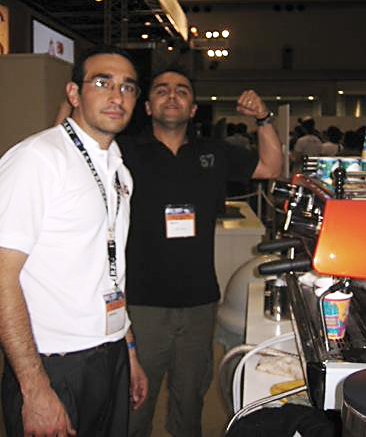
All too soon, it was time to begin my journey to Tokyo. From Buenos Aires, I flew to Santiago, Chile, to Auckland, New Zealand, to Sydney, Australia, and finally to Tokyo, Japan. After 28 hours in the air, I arrived at Narita Airport, only to discover that my luggage – with all my clothes, barista tools, coffee blend, china, and the ingredients for my signature drink – hadn’t arrived with me. After two hours of waiting, I went to my hotel with my carry-on baggage, which included two suits, a digital camera, some personal effects, a book, and… not much more.
The next day I went to the Tokyo Big Sight, where the competition was to take place, to meet Michelle Campbell and Cindy Chang, and to tell them about my lost luggage. They were kind enough to change my competition time to the last possible slot at the end of the second day, just in case my luggage was found.
The airline didn’t have any idea where my luggage was, so I spent the two days leading up to my competition time trying to find the ingredients for my signature drink at Tokyo’s markets. Unfortunately, the only red hot chili peppers I found were extremely spicy, hotter than I wanted. Many of my fellow competitors offered me their blends, and while I was grateful for the offers, I decided not to accept; after all, I knew they had all been working on their blends for several months.
Still, I didn’t want to have any doubts about my performance, being that this was Argentina’s first time at the WBC; I wanted to know that I really deserved each one of the points I received, since one of the reasons I went to Tokyo was to learn. Consequently, I decided to use Chicco D’Oro, a coffee that I took for practice that actually did make it to Tokyo. It’s a coffee that I really know and feel comfortable with, as it’s the one I use at home and drink every morning. In my opinion, it’s the best coffee that can be found in Argentina – keeping in mind that specialty coffee is not developed here.
I almost wasn’t able to sleep due to jet lag (a 12 hour difference!) and worry over the loss of my luggage. I kept thinking about how it was Argentina’s first appearance at the WBC and that a good performance by me could help to develop the barista profession in my country …and I was alone. There were no sponsors to coach or encourage me.
Competition (and Pressure) Time
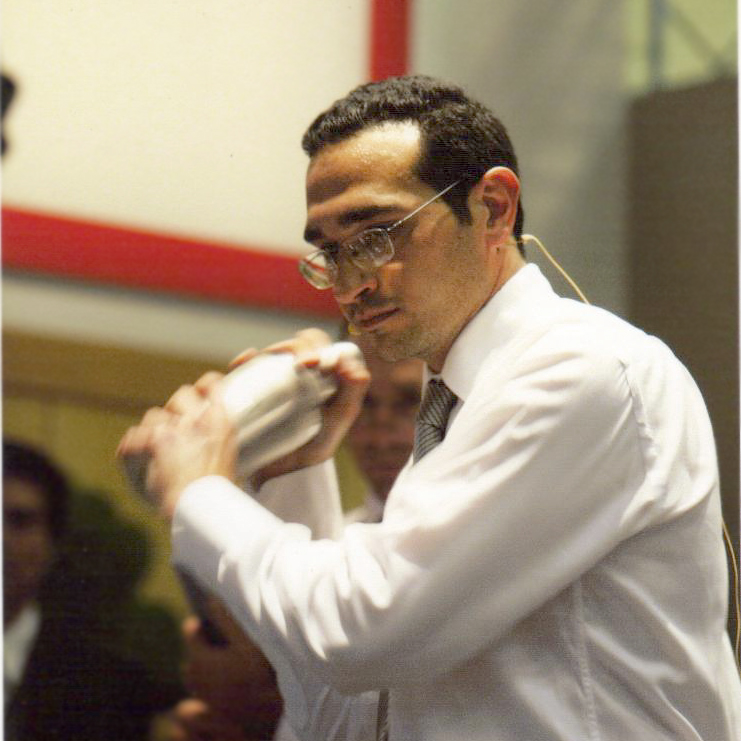
Mr. Nagata, the WBC 2007 Tokyo Task Force Vice Chair, took my lost luggage as his personal challenge, and amazingly, he was able to track my suitcase back to Santiago! Unfortunately, it wasn’t delivered to the Tokyo Big Sight until just moments before my preparation time, and some stuff was missing – the Argentinean variety of Bishop’s Crown red hot chili peppers, my coffee blend, and my music CD. I had to borrow Tim Wendelboe’s (2004 WBC Champion) notebook computer to download my tangos from the web and burn them onto a CD with the help of some WBC volunteers.
As soon as I finished the CD, it was time for me to go on stage for my preparation time – only to notice at that moment that I was missing some spoons and sugar. I had to run back to the booth to “borrow” them, and as a result, I didn’t have time during my preparation to set up the grinder. I lost almost three priceless minutes of my competition time setting up the grinder, and consequently, right from the start, I knew I wasn’t going to finish my presentation in the allotted time.
I started with the espressos, followed by the cappuccinos, and then my signature drink. I believe my espressos and capuccinos were just “fine”, as the taste of “my” blend couldn’t compare with that of my fellow baristas… unfortunately, just “fine” is not enough in the WBC.
Argentina is one of the most important honey exporters in the world, and since I’m a beekeeper, my signature drink was designed to pay tribute to the billions of Argentinean bees that work so hard to produce a premium product that is enjoyed by consumers worldwide. I called my signature drink “Sting.”
The recipe starts with an espresso shot infused with an Argentinean variety of Bishop’s Crown red hot chili peppers (cooled in a shaker, as I was told I couldn’t use liquid nitrogen). A citric foam is added (lemon / orange / grapefruit juice, water, and gelatin in a whipper); and then it is crowned with a cream made of honey, dulce de leche, and chocolate sauce and cream in a whipper. Finally, it is decorated with pollen grains.
When the clock had reached 16 minutes, knowing that I was going to be disqualified, I simply ended my presentation, and my signature drink remained incomplete. I did my best – but I was overwhelmed by the situation and couldn’t make a decent performance. The judges never even got to taste the wonderful sauce I brought from Argentina. However, if I make it to Copenhagen, I will make this signature drink once again.
Looking Forward
In spite of my disqualification, I had a really great time at the WBC; I’ve learned a lot from my fellow baristas about coffee blends, the barista profession, and most importantly, about fair play. I wasn’t expecting such a wonderful atmosphere backstage, especially as my competition time was changed to accommodate my situation, but almost every one of the 44 competitors and their coaches offered me their coffee blends, cups, tools, and help for my presentation. I wouldn’t have been able to do it without them!
I know everything is going to be easier next year, but there is a lot to be done. I hope to win the 2008 Argentine National Championship, if only to have a chance to do a better job at Copenhagen. Argentina will have at least a few more baristas by then, because ASACAFE has organized a coffee training center. I’ve been in touch with some producers, trying to organize a trip to their coffee regions – and I hope to have the budget to accomplish that! Lastly, I intend to start my own micro-roasting company; this will make it easier (and less expensive) to develop a blend for next year’s competition while allowing me to introduce specialty coffees to Argentina.
It’s been an honour for this South American beekeeper to compete with the best baristas in the world. See you next year!
We’re pleased to present this article by Argentina’s Federico Cabrera, their 2007 entrant into the World Barista Championship, and a fellow who holds the distinction of being the first non-professional (in the conventional sense) barista to compete at the world level.













